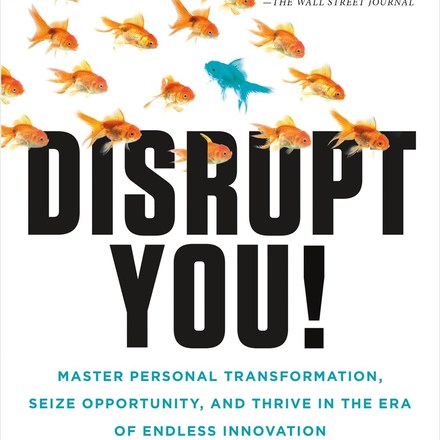Disruption in the collaboration era
Posted by Janice Scheckter on 08 July 2016, 05:45 CAT
Having just completed one of my best business reads this year, Disrupt You by Jay Samit, I firmly believe we’re in the best possible era for disruption. I know that there are some out there who feel the word itself is vastly overtraded. For me, disruption is about new thinking that improves the way we do stuff, consume stuff, create stuff, etc. It’s about improving lives through better access to goods, services and talent.
Jay Samit, a technology innovator who led the music label EMI’s transition into digital downloads, explores the concept of individual disruption in this truly astute, mind-shifting book.
According to Samit, personal disruption consists of identifying “links in your personal value chain to unlock your potential and prime yourself to seize opportunity”; he suggests that those who find “opportunity in every obstacle” will see failure as a new start.
Some of the collaborative era examples of disruption, Samit describes; that I really enjoyed included the story of Wikipedia. Of course, it’s one that has been repeated on numerous occasions and what better story than the founding disruptors creating a global knowledge resource that just keeps getting richer and richer. It’s the true collaborative era disruption but what really struck me was Jimmy Wales and Larry Sanger’s commitment to a set of values and that was not to commercialise this unbelievable resource. In fact, when asked on Quora what the value of Wikipedia may be if commercialised, Jimmy Wales answered the following:
‘Here's a rough guess. According to The Newsonomics of ARPU, Counting Revenue per Visitor the New York Times in 2010 had revenue of about $3.54 in a year per monthly unique user. Now, the NY Times traffic is mostly in the US (a high advertising revenue market) as compared to Wikipedia (which is global, including markets with very little advertising revenue). So let’s pessimistically scale back and assume that Wikipedia could only do $1 per monthly user in revenue per year. Then that's $500 million a year in revenue. There would be some significant costs (sales people, ad ops) to getting that revenue, so expenses would have to ramp up to, say, $100 million a year. Oh, heck, let's be pessimistic again and say expenses have to go up to $200 million a year.’
But getting back to the book, Jay Samit begins by affirming the value of introspection, specifically regarding how the reader views the world and responds emotionally to challenges and problems. According to him, this process of self-examination can lead to a plan with a starting point and an end goal. The book has been an extraordinary experience for me, at times learning of the exponential wealth created and at other times, of the wonderful altruism.
For more insights on the collaborative era subscribe to Collaboration Central.
Janice Scheckter is a collaborative activist, has once donated $10 to Wikipedia on request and cannot imagine the value derived from the free global encyclopaedia.